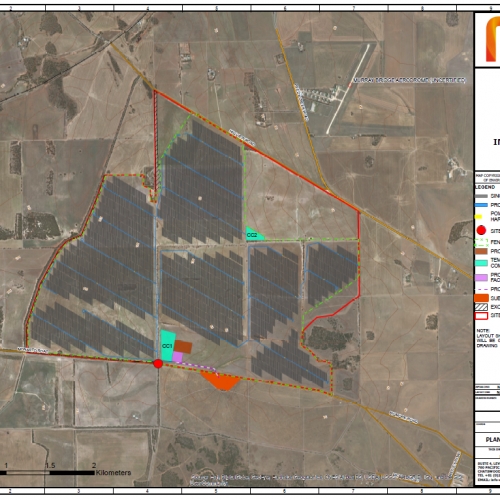Aviation Projects was asked to prepare an Aeronautical Impact Assessment (AIA) as part of the planning application prepared by RES Australia Pty Ltd for the development of Pallamana Solar Farm, located approximately 6km to the north west of the city of Murray Bridge, South Australia just to the south of Pallamana Aerodrome (Murray Bridge, YMBD).
RES Australia Pty Ltd engaged Aviation Projects to visit the site and meet with the owner of Murray Bridge aerodrome and local aviation stakeholders to discuss the proposed solar farm development and potential aviation safety implications, and produce an Aeronautical Impact Assessment which identified any potential aviation impacts and suggested mitigations, sufficient to support a planning application.
The aerodrome operator expressed concern that an aircraft suffering a loss of power on departure from runway 19 and having no ability to avoid landing on or into the solar panel array, would suffer much more serious consequences than in the current circumstances. It was suggested that the provision of a ‘forced landing area’, generally aligned with the runway but avoiding vertical obstructions like trees and power lines, would serve to mitigate this risk to an acceptable level.
The final revised layout was developed in consideration of the requests of Murray Bridge aerodrome operator and following local community consultation. The concept provides an area to perform a forced landing for aircraft suffering an engine failure on departure from runway 19. The area is also aligned with the approach to runway 01/departure from runway 19.
Aviation Projects also prepared a solar glare analysis using the ForgeSolar application.
Managing Director Keith Tonkin then attended the State Commission Assessment Panel (SCAP) hearing on 28 March 2019 to address concerns about aviation safety.
The project was approved on 23 July 2019.
The project aims to supply energy to the National Electricity Market by generating electricity through the use of Solar PV panels. Energy will also be stored and dispatched later through the use of banks of Lithium Ion Batteries. It will have a total Solar Capacity of up to 176MW which is sufficient to power up to 82,000 South Australian homes. Construction is expected to commence in mid-2020.

